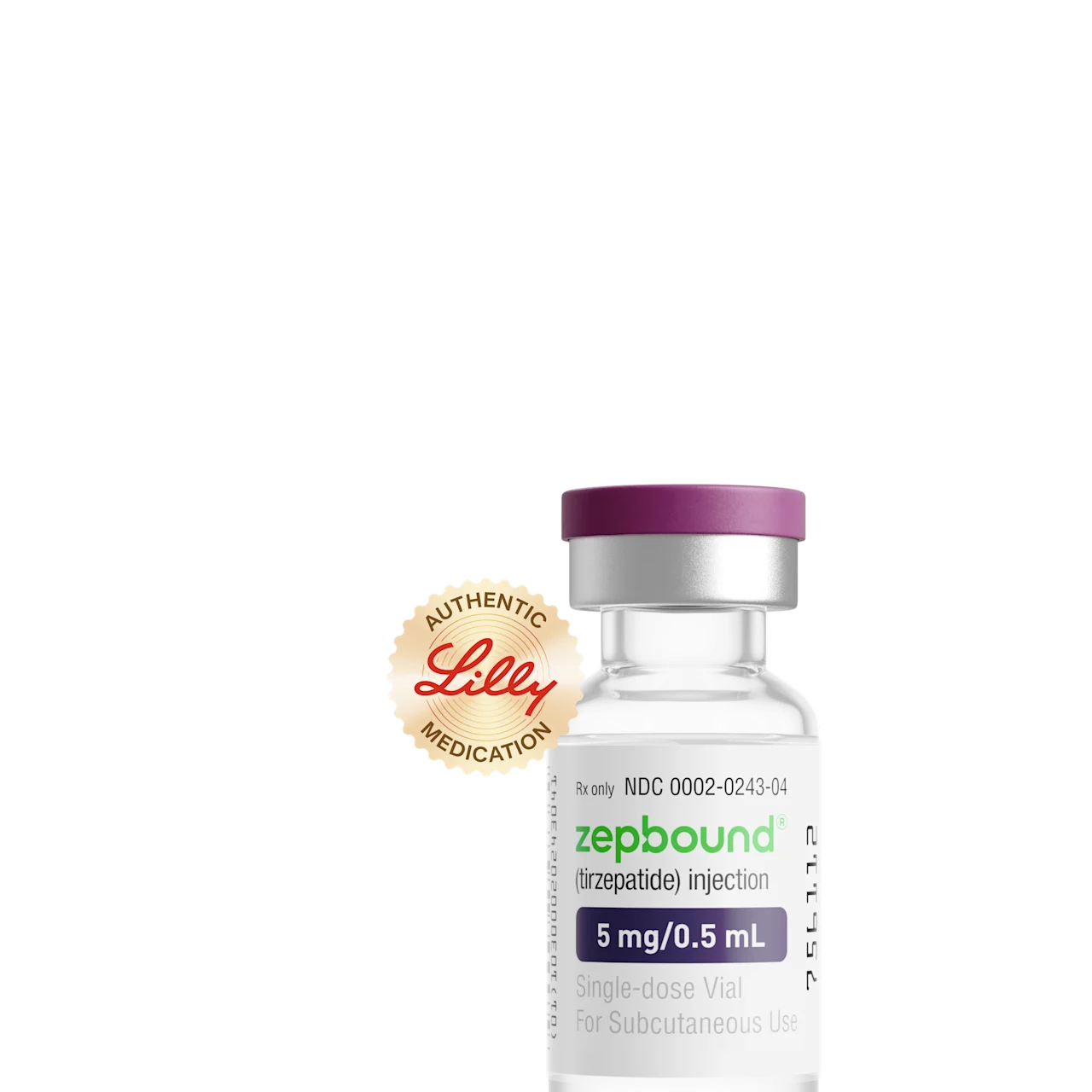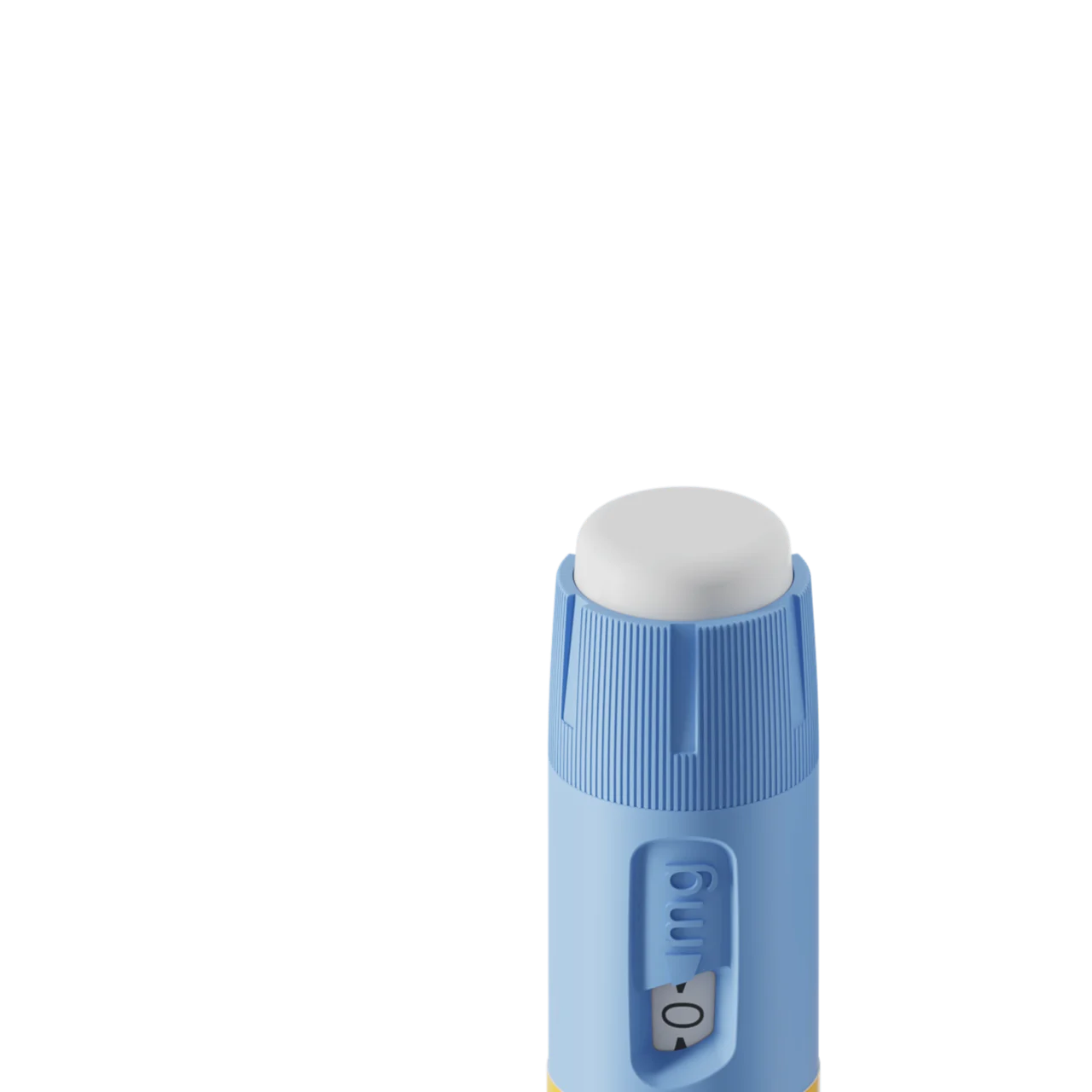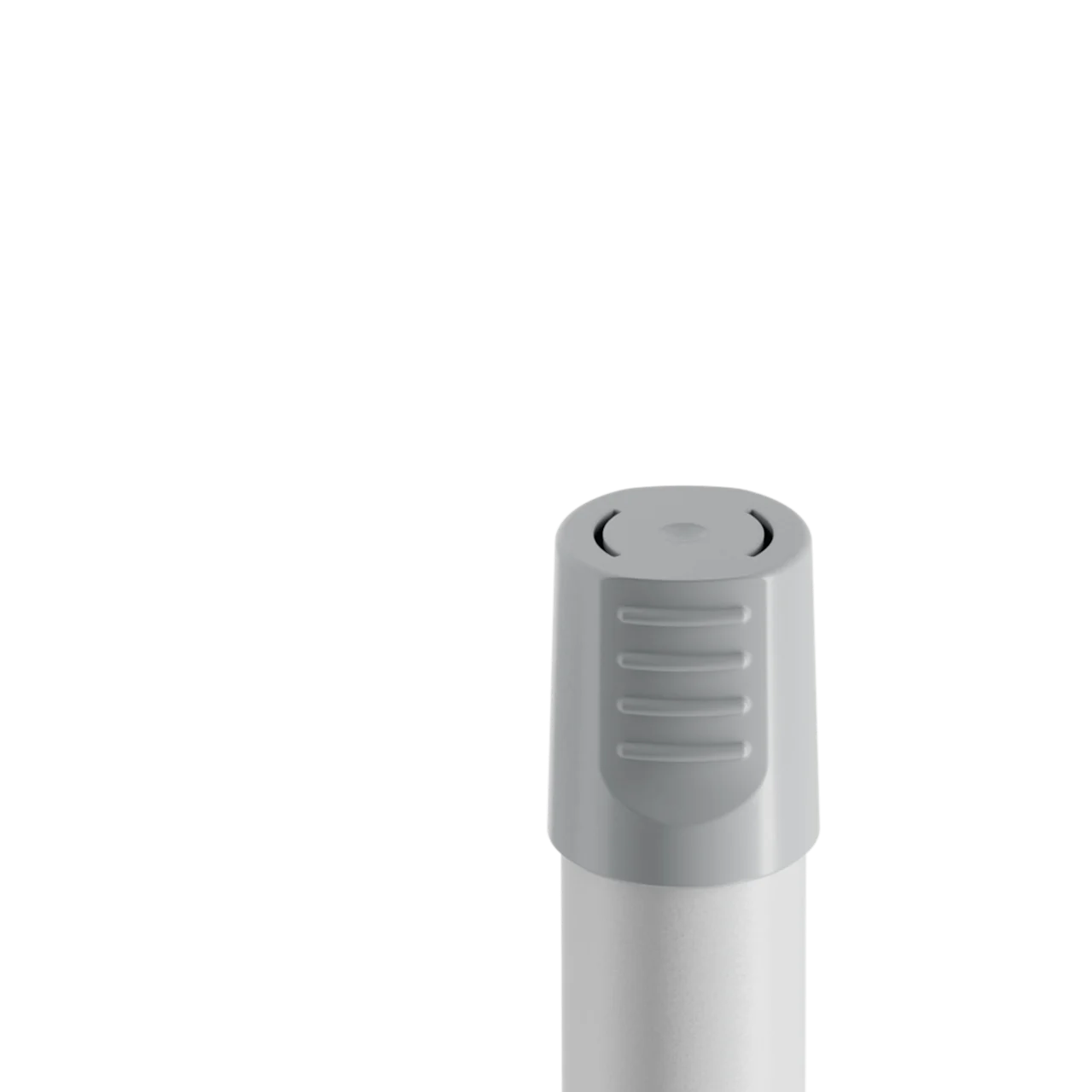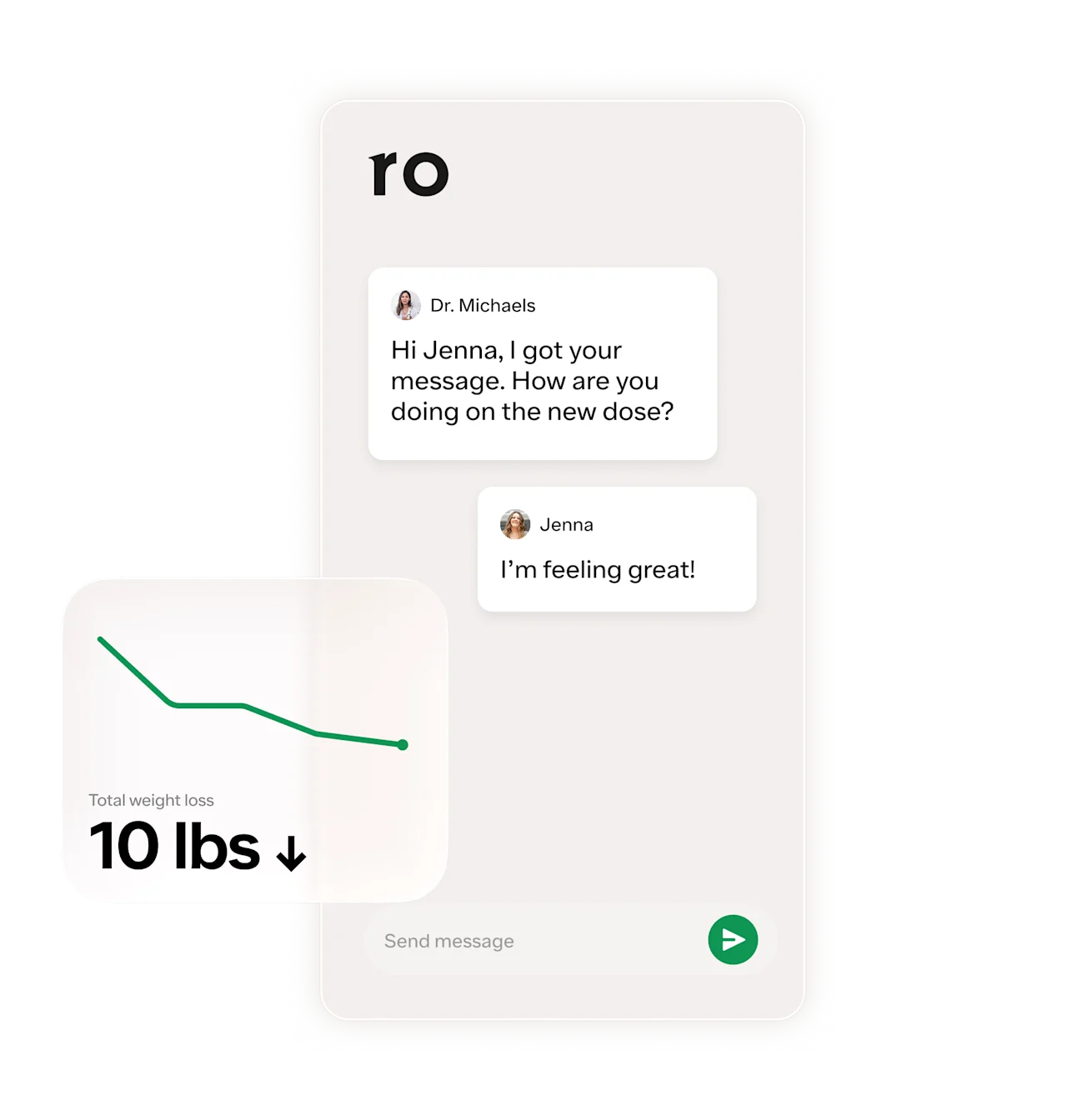Key takeaways
A pound of muscle and a pound of fat both weigh exactly one pound, but muscle is denser and therefore takes up less space.
Because a scale can’t distinguish between fat and muscle, measuring body composition offers a more accurate picture of your health.
For people who need support with weight loss, GLP-1 medications like semaglutide could be an option alongside healthy eating and regular exercise.
Here's what we'll cover
Here's what we'll cover
Here's what we'll cover
Key takeaways
A pound of muscle and a pound of fat both weigh exactly one pound, but muscle is denser and therefore takes up less space.
Because a scale can’t distinguish between fat and muscle, measuring body composition offers a more accurate picture of your health.
For people who need support with weight loss, GLP-1 medications like semaglutide could be an option alongside healthy eating and regular exercise.
Does muscle weigh more than fat? The short answer
A pound of muscle and a pound of fat weigh the same; the difference lies in their density. Muscle is much denser than fat, so it takes up less space in the body. That’s why you can look leaner and smaller even if the scale doesn’t show any weight loss.
Think of it this way: One pound of feathers and one pound of rocks weigh the same—one pound. But the feathers take up more space. The same goes for fat and muscle.
Muscle vs. fat: weight, density, and function
Muscle doesn’t actually weigh more than fat. The difference lies in their density.
Muscle tissue is denser — about 1.06 kilograms per liter — while fat tissue is less dense, around 0.92 kilograms per liter. In practical terms, that means muscle takes up roughly 13%-15% less space than fat at the same weight.
But how much does muscle weigh? When comparing muscle weight vs. fat weight, the more meaningful distinction is their function, not their mass. Muscle and fat play very different roles in the body.
Muscle makes up about 40% of your total body weight and contains most of the body’s protein. It contracts to create movement, supports posture, stabilizes joints, and helps regulate body temperature.
Fat tissue stores energy and plays a key role in hormone balance, metabolism, and glucose regulation.
Why two people can weigh the same but look different
Weight alone doesn’t show how much of your body is muscle or fat, which is why two people of the same weight can look completely different.
For example, someone who weighs 170 pounds with a higher fat mass may have a softer appearance, while another person at the same weight with more muscle will appear leaner and more toned.
Muscle also boosts your metabolism. Because muscle tissue is more metabolically active than fat, having more of it helps you burn more energy, even at rest. That’s why strength training is such an effective tool for long-term weight management.
The scale doesn’t tell the whole story
People often ask, “Is muscle heavier than fat?” because gaining muscle can cause the scale to go up. Muscle gain can cause a weight increase. A scale can tell you your total weight, but just knowing your weight won’t tell you how much of that number comes from muscle, fat, bone, or water. That’s where body composition becomes important.
BMI, or body mass index, is often used to classify people as underweight, healthy, overweight, or obese. But BMI doesn’t actually distinguish between fat and muscle. It can label a muscular person as “overweight” even if they have low body fat, or overlook someone with a normal BMI but a higher body fat percentage.
That’s why body composition and body fat percentage offer a clearer picture of health. These measures show how much of your body is fat compared to everything else, giving better insight into whether your weight is made up of more muscle or fat.
Body composition also varies by age and sex. People with female genitalia generally have higher body fat percentages than those with male genitalia. And as you age, muscle mass often declines while fat increases up to a certain point. Studies show that body fat percentage tends to increase with age and then plateau later in life. tends to rise with age and then levels off later in life.
Ultimately, paying attention to body composition provides a much more accurate sense of your health and fitness than relying on a single number on the scale.
How to tell if weight gain is muscle or fat
To understand what kind of weight you’re gaining, pay attention to how your body feels, looks, and moves, and watch for things like:
Your clothes fit differently: If your clothes feel looser or fit better even though the scale has gone up, that might mean you’ve gained lean muscle and lost some fat.
Your body feels firmer: A tighter, more toned feeling often means muscle growth. Fat tends to feel softer under the skin, while muscle feels compact and solid.
You’re getting stronger: Lifting heavier weights, completing more reps, or noticing that daily activities feel easier are clear signs your muscles are growing and getting stronger.
Progress photos show visible change: Comparing pictures taken weeks apart can reveal differences your scale won’t capture. Look for better definition around your shoulders, abdomen, and thighs.
Body composition testing details: Tools like DEXA scans can estimate how much of your weight comes from fat versus lean mass. They give a more accurate picture than what you see in the mirror, lift at the gym, or read from the scale or your BMI.
Small changes on the scale can still reflect meaningful improvements in body composition. Gaining muscle boosts strength, balance, and metabolism, even if your weight hardly changes.
Benefits of gaining muscle and losing fat
Gaining muscle and losing fat helps support better health, strength, and metabolism. More muscle helps your body use energy efficiently, improves blood sugar control, and reduces inflammation through compounds called myokines that are released during exercise.
Muscle also plays a central role in maintaining the body’s protein stores, which support proper organ function and help prevent metabolic changes associated with chronic disease.
Meanwhile, lowering excess body fat reduces the risk of cardiovascular disease, type 2 diabetes, and certain cancers. Preserving muscle mass while minimizing excess fat also helps maintain bone density, strength, and mobility as we age.
Maintaining muscle mass supports strength and mobility as we get older, and having a healthy body composition, especially strong bone density, helps reduce the risk of fractures and osteoporosis.
How to build muscle while losing fat
You can lose fat and build muscle simultaneously, but it requires a delicate balance. Here’s what can work best, according to research:
Follow a moderate calorie deficit, not an extreme one: Steady, controlled weight loss helps your body burn fat while maintaining muscle. Crash diets can cause your body to break down lean tissue for energy.
Eat enough protein and spread it out throughout the day: Protein provides your muscles with the building blocks they need to repair and grow. Aim for enough protein at each meal rather than saving it all for dinner. Your muscles respond better when protein is evenly distributed throughout the day.
Strength train regularly: Lifting weights or doing resistance-based workouts signals to your body that it needs to preserve muscle. It also improves muscle strength and function.
Add exercise to support overall fitness: Resistance training and aerobic activities, such as brisk walking or cycling, can help burn fat while maintaining muscle and protecting lean mass during weight loss.
Prioritize recovery: Quality sleep and recovery are essential for maintaining muscle strength.
A well-structured plan helps you lose fat, maintain muscle, and improve strength simultaneously.
When weight loss medications can help
For some individuals, lifestyle changes alone may not be sufficient to achieve their weight loss goals. That’s where prescriptions like semaglutide can help.
Sold under brand names like Ozempic and Wegovy, these medications (called GLP-1 receptor agonists) work with your body’s natural hormones to reduce hunger, increase fullness, and support steady weight loss over time.
For many people, they’re highly effective for weight loss, but keep in mind they might cause some loss of lean muscle, too. If you want to preserve muscle mass, it’s best to pair medications like these with strength training and adequate protein intake.
When you combine GLP-1 medications with balanced nutrition, regular movement, and medical support, they can make long-term weight management more achievable.
Remember, while these medications can be highly effective, they’re not appropriate for everyone. These medications are usually prescribed only to people who meet specific medical criteria. Speak to your healthcare provider for more information.
Rx weight loss with Ro
Get access to prescription weight loss medication online
Bottom line: does muscle weigh more than fat?
It turns out that no, muscle doesn’t weigh more than fat; pound for pound, they weigh the same. But the same volume of muscle weighs more than the same volume of fat because muscle is denser. That’s why body composition, not just body weight, matters most for health and appearance.
Here’s what you need to remember:
Muscle and fat differ in density, not weight: One pound of muscle and one pound of fat weigh the same, but muscle takes up less space, giving the body a leaner, more toned look.
Body composition matters more than BMI: Some traditionally used metrics like BMI can’t show how much of your weight is lean tissue versus fat. That’s why body composition can sometimes help give a better understanding of your body.
Strength training protects your metabolism: Preserving or building lean muscle helps maintain energy expenditure and makes it easier to keep weight off long-term.
Medications can support weight loss: GLP-1s such as semaglutide can help some people lose weight, but they work best when paired with exercise and balanced nutrition. Speak to your healthcare provider if you would like more information.
In truth, there’s no measurable answer to how much more muscle weighs than fat. Understanding how muscle and fat interact helps shift the focus from chasing a number on the scale to building a stronger, healthier body.
Frequently asked questions (FAQs)
Why do I look thinner but weigh more?
You might look leaner but weigh more because muscle is denser than fat. As you build muscle and reduce fat, your body can look more defined even if the scale doesn’t show a lower number.
Does 10 lbs of fat look like 10 lbs of muscle?
No, 10 lbs of fat and the same amount of muscle don’t look the same. Muscle is denser, meaning it’s tightly packed within the body, while fat takes up more space. That’s why someone with more muscle can appear leaner than someone with more fat, even if they weigh the same.
Does building muscle help you lose weight?
Not exactly. Building muscle doesn’t automatically make you lose weight, but it does improve how your body manages energy and blood sugar. More muscle increases insulin sensitivity and helps your body use glucose more effectively, which supports long-term weight control.
Does adding muscle always mean gaining weight?
No, adding muscle doesn’t always mean gaining weight. It’s possible to build muscle while losing fat if your training and nutrition are well-balanced. Your scale weight may stay the same or change only slightly, even as your body composition improves.
DISCLAIMER
If you have any medical questions or concerns, please talk to your healthcare provider. The articles on Health Guide are underpinned by peer-reviewed research and information drawn from medical societies and governmental agencies. However, they are not a substitute for professional medical advice, diagnosis, or treatment.
Ozempic Important Safety Information: Read more about serious warnings and safety info.
Wegovy Important Safety Information: Read more about serious warnings and safety info.
GLP-1 Important Safety Information: Read more about serious warnings and safety info.
References
Barrea, L., Annunziata, G., Verde, L., et al. (2025). A Multidisciplinary Perspective on Semaglutide Treatment and Medical Nutrition Therapy in Obesity Management. Current Obesity Reports, 14(1), 73. doi: 10.1007/s13679-025-00667-3. Retrieved from https://pmc.ncbi.nlm.nih.gov/articles/PMC12549762/
Cava, E., Yeat, N. C., & Mittendorfer, B. (2017). Preserving Healthy Muscle during Weight Loss. Advances in Nutrition (Bethesda, Md.), 8(3), 511–519. doi: 10.3945/an.116.014506. Retrieved from https://pmc.ncbi.nlm.nih.gov/articles/PMC5421125/
Chen, Y., Cui, Y., Chen, S., et al. (2017). Relationship between sleep and muscle strength among Chinese university students: a cross-sectional study. Journal of Musculoskeletal & Neuronal Interactions, 17(4), 327–333. Retrieved from https://pmc.ncbi.nlm.nih.gov/articles/PMC5749041/
Di Ludovico, A., La Bella, S., Ciarelli, F., et al. (2024). Skeletal muscle as a pro- and anti-inflammatory tissue: insights from children to adults and ultrasound findings. Journal of Ultrasound, 27(4), 769–779. doi: 10.1007/s40477-024-00917-5. Retrieved from https://pmc.ncbi.nlm.nih.gov/articles/PMC11496437/
Etchison, W. C. (2011). Letter to the editor response. Sports Health, 3(6), 499. doi: 10.1177/1941738111422691. Retrieved from https://pmc.ncbi.nlm.nih.gov/articles/PMC3445233/
Frija-Masson, J., Mullaert, J., Vidal-Petiot, E., et al. (2021). Accuracy of Smart Scales on Weight and Body Composition: Observational Study. JMIR mHealth and uHealth, 9(4), e22487. doi: 10.2196/22487. Retrieved from https://pmc.ncbi.nlm.nih.gov/articles/PMC8122302/
Goonasegaran, A. R., Nabila, F. N., & Shuhada, N. S. (2012). Comparison of the effectiveness of body mass index and body fat percentage in defining body composition. Singapore Medical Journal, 53(6), 403–408. Retrieved from https://pubmed.ncbi.nlm.nih.gov/22711041/
Harvey, I., Boudreau, A., & Stephens, J. M. (2020). Adipose tissue in health and disease. Open Biology, 10(12), 200291. doi: 10.1098/rsob.200291. Retrieved from https://pubmed.ncbi.nlm.nih.gov/33292104/
Holmes, C. J. & Racette, S. B. (2021). The Utility of Body Composition Assessment in Nutrition and Clinical Practice: An Overview of Current Methodology. Nutrients, 13(8), 2493. doi: 10.3390/nu13082493. Retrieved from https://pubmed.ncbi.nlm.nih.gov/34444653/
Karakasis, P., Patoulias, D., Fragakis, N., et al. (2025). Effect of glucagon-like peptide-1 receptor agonists and co-agonists on body composition: Systematic review and network meta-analysis. Metabolism: Clinical and Experimental, 164, 156113. doi: 10.1016/j.metabol.2024.156113. Retrieved from https://pubmed.ncbi.nlm.nih.gov/39719170/
Kommu, S. & Whitfield, P. (2024). Semaglutide. StatPearls. Retrieved on Nov. 10, 2025 from https://www.ncbi.nlm.nih.gov/books/NBK603723/
McCuller, C., Jessu, R., & Callahan, A. L. (2023). Physiology, Skeletal Muscle. StatPearls. Retrieved on Nov. 10, 2025 from https://www.ncbi.nlm.nih.gov/books/NBK537139/
McPherron, A. C., Guo, T., Bond, N. D., et al. (2013). Increasing muscle mass to improve metabolism. Adipocyte, 2(2), 92–98. doi: 10.4161/adip.22500. Retrieved from https://pmc.ncbi.nlm.nih.gov/articles/PMC3661116/
Palmer, A. K. & Jensen, M. D. (2022). Metabolic changes in aging humans: current evidence and therapeutic strategies. The Journal of Clinical Investigation, 132(16), e158451. doi: 10.1172/JCI158451. Retrieved from https://pmc.ncbi.nlm.nih.gov/articles/PMC9374375/
Rai, R., Ghosh, T., Jangra, S., et al. (2023). Relationship Between Body Mass Index and Body Fat Percentage in a Group of Indian Participants: A Cross-Sectional Study From a Tertiary Care Hospital. Cureus, 15(10), e47817. doi: 10.7759/cureus.47817. Retrieved from https://pmc.ncbi.nlm.nih.gov/articles/PMC10676745/
Wolfe, R. R. (2006). The underappreciated role of muscle in health and disease. The American Journal of Clinical Nutrition, 84(3), 475–482. doi: 10.1093/ajcn/84.3.475. Retrieved from https://pubmed.ncbi.nlm.nih.gov/16960159/
Wright, D. C., Cheng, A. J., & MacPherson, R. E. K. (2024). Celebrating a decade of exercise physiology and metabolism research in physiological reports. Physiological Reports, 12(4), e15960. doi: 10.14814/phy2.15960. Retrieved from https://pmc.ncbi.nlm.nih.gov/articles/PMC10890928/


















